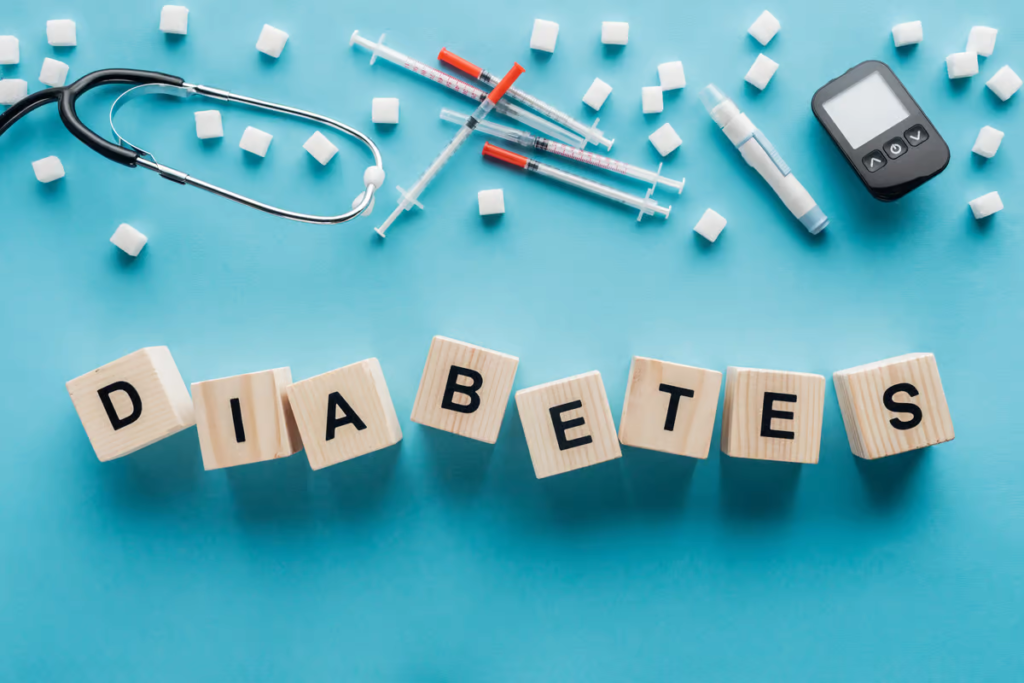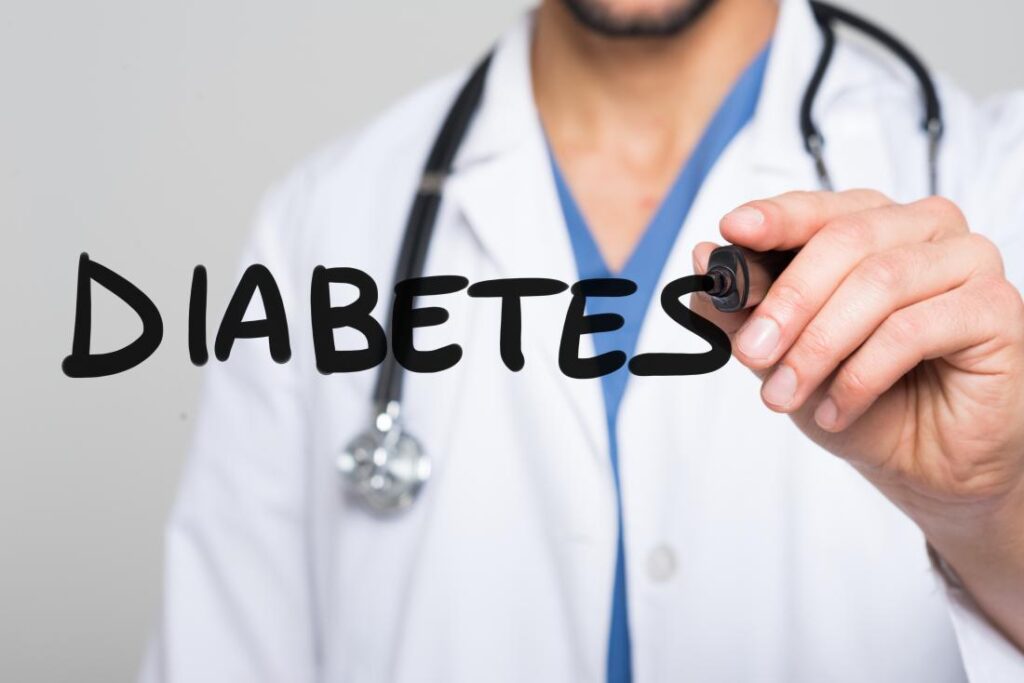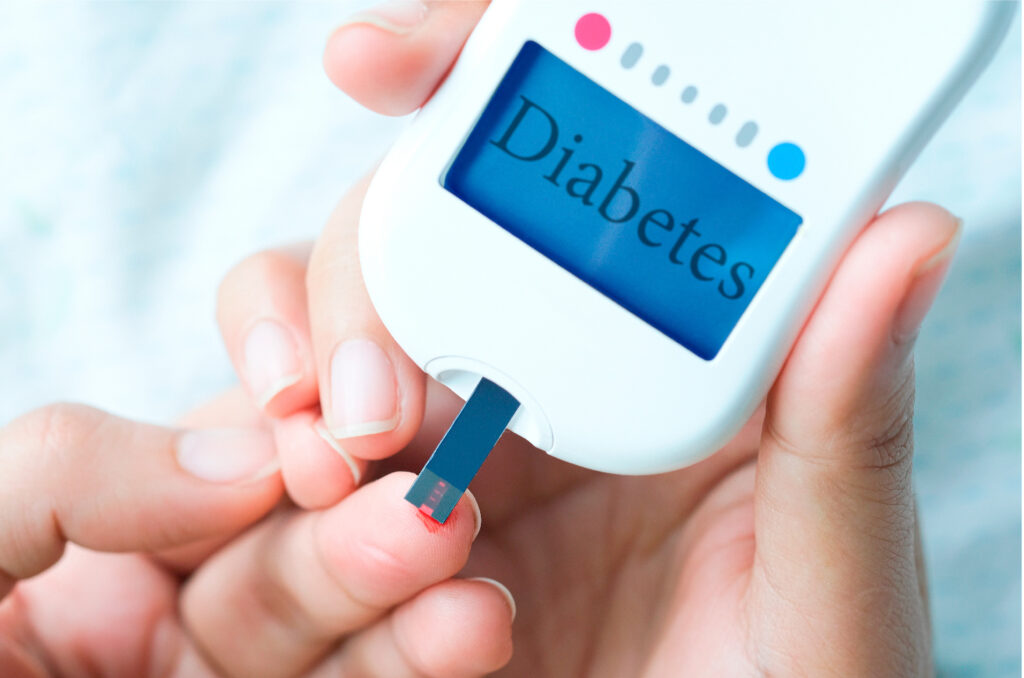Diabetes is a chronic metabolic disorder characterized by high blood sugar levels due to insufficient insulin production, ineffective insulin use, or both. It affects millions and millions of people worldwide and can lead to severe health complications if not managed or treated properly. Understanding all the possible symptoms of diabetes is crucial for early detection and treatment. This article delves into all the symptoms of diabetes of three different types in detail, explaining how they manifest and why they occur.

Types of Diabetes and Their Symptoms
Diabetes is primarily classified into three types: Type 1 diabetes, Type 2 diabetes, and gestational diabetes. While the underlying causes of these types differ, many symptoms overlap due to their shared characteristic of elevated blood glucose levels.
Also Read: 9 High Blood Pressure Symptoms You Should be Worried About!
Type 1 Diabetes Symptoms
Type 1 diabetes, previously known as juvenile diabetes or insulin-dependent diabetes, occurs when the body’s immune system attacks and destroys insulin-producing beta cells in the pancreas. This type typically develops in children and young adults but can occur at any age. Symptoms of diabetes (Type 1) often appear suddenly and include:

- Frequent Urination (Polyuria): Elevated blood glucose levels lead to increased urine production as the kidneys attempt to expel the excess sugar. This results in frequent trips to the bathroom, particularly at night (nocturia).
- Excessive Thirst (Polydipsia): The increased urination causes dehydration, prompting excessive thirst as the body tries to replenish lost fluids.
- Extreme Hunger (Polyphagia): Despite eating more, individuals with Type 1 diabetes often feel constantly hungry. This is because the body’s cells are deprived of glucose, their primary energy source, leading to increased appetite.
- Unintended Weight Loss: The body starts breaking down muscle and fat for energy when it cannot access glucose, leading to rapid and unexplained weight loss, despite increased food intake. This is one of the most common symptoms of diabetes along with polyuria.
- Fatigue and Weakness: Lack of glucose in the cells results in a constant feeling of tiredness and weakness, affecting daily activities and overall quality of life.
- Blurred Vision: High blood sugar levels can cause the lens of the eye to swell, leading to blurred vision and difficulty focusing.
- Slow-Healing Wounds: High blood glucose levels impair blood circulation and immune response, slowing the healing process of cuts and bruises.
- Frequent Infections: Individuals with Type 1 diabetes may experience frequent infections, particularly of the skin, gums, and urinary tract, due to weakened immunity.
Type 2 Diabetes Symptoms
Type 2 diabetes, formerly known as adult-onset or non-insulin-dependent diabetes, is the most common form of diabetes. It usually develops in adults but can also occur at any age. This type is characterized by insulin resistance, where the body’s cells do not respond properly to insulin. Symptoms of diabetes (Type 2) often develop gradually and include:
- Frequent Urination (Polyuria): Similar to Type 1 diabetes, high blood sugar levels cause increased urine production and frequent urination, making it one of the most common symptoms of diabetes.
- Excessive Thirst (Polydipsia): Dehydration from frequent urination leads to persistent thirst.
- Extreme Hunger (Polyphagia): Despite consuming more food, the body’s cells are starved of glucose, resulting in constant hunger.
- Unintended Weight Loss: While more common in Type 1 diabetes, some individuals with Type 2 diabetes may also experience unexplained weight loss.
- Fatigue and Weakness: Insulin resistance prevents cells from accessing glucose, causing persistent tiredness and fatigue.
- Blurred Vision: Elevated blood sugar can affect the eye lens, causing vision problems. It’s one of the most underrated symptoms of diabetes.
- Slow-Healing Wounds: Impaired blood circulation and immune function result in slow healing of cuts and sores.
- Frequent Infections: High blood glucose levels can lead to frequent infections, particularly of the skin and urinary tract.
- Darkened Skin Patches (Acanthosis Nigricans): Insulin resistance can cause dark, velvety patches of skin, often in body folds such as the neck, armpits, and groin.
Don’t Miss: 10 Low Blood Pressure Symptoms You Should be Worried About!
Gestational Diabetes Symptoms
Gestational diabetes mainly occurs during pregnancy when the body cannot produce enough insulin to meet the increased requirements. It usually develops in the second or third trimester and often does not cause noticeable symptoms. However, some women may experience symptoms of diabetes of this kind which are as follows:
- Increased Thirst: Pregnant women with gestational diabetes may feel unusually thirsty due to elevated blood sugar levels.
- Frequent Urination: Increased urination is common during pregnancy, but it may be more pronounced in women with gestational diabetes.
- Fatigue: While common in pregnancy, fatigue can be exacerbated by gestational diabetes due to high blood sugar levels.
- Blurred Vision: Elevated blood glucose can affect vision.
Common Symptoms Across All Types of Diabetes
Certain symptoms of diabetes are very common across all types of diabetes. So, you do not want to miss them too.
- Frequent Urination (Polyuria): High blood sugar levels cause the kidneys to filter out excess glucose, leading to increased urine production as we already have discussed.
- Excessive Thirst (Polydipsia): Dehydration from frequent urination prompts increased fluid intake.
- Extreme Hunger (Polyphagia): Despite eating more, cells starved of glucose signal the body to consume more food.
- Unintended Weight Loss: The body breaks down fat and muscle for energy when glucose is unavailable, leading to weight loss.
- Fatigue and Weakness: Lack of glucose in cells results in constant tiredness and weakness.
- Blurred Vision: High blood sugar can affect the lens of the eye, causing vision problems.
- Slow-Healing Wounds: Impaired blood circulation and immune function slow the healing process.
- Frequent Infections: High blood glucose levels can weaken the immune system, leading to recurrent infections.
Don’t Miss: 16 Symptoms of Depression: What You Need to Know!
Complications from Untreated Diabetes!
Now that you have known all the symptoms of diabetes of all kinds, you should also know that if left untreated, diabetes can lead to severe complications affecting various organs and systems in the body. Recognizing symptoms early and seeking medical attention is crucial to prevent these complications. Here’s the list of possible complications that might happen if you leave diabetes untreated.
- Diabetes increases the risk of heart disease, stroke, and high blood pressure due to damaged blood vessels and increased cholesterol levels.
- High blood sugar levels can damage the kidneys’ filtering system, leading to kidney disease and, in severe cases, kidney failure.
- Diabetes can damage blood vessels in the retina, leading to vision problems and, if untreated, blindness.
- Prolonged high blood sugar levels can damage nerves, causing pain, numbness, and digestive issues.
- Poor circulation and nerve damage can lead to foot ulcers, infections, and, in severe cases, amputation.
- Diabetes increases the risk of skin infections and other skin conditions due to impaired immune function.
- Diabetes can damage the blood vessels and nerves in the inner ear, leading to hearing loss.

The Sum-up
Diabetes is a chronic condition with a wide range of symptoms that can vary depending on the type of diabetes and the individual’s overall health. Common symptoms of diabetes include frequent urination, excessive thirst, extreme hunger, unintended weight loss, fatigue, blurred vision, slow-healing wounds, and frequent infections. Early detection and management of diabetes are crucial to prevent complications and maintain overall health.
If you or someone you know is experiencing these symptoms of diabetes, it is essential to seek medical attention for proper diagnosis and treatment. Managing diabetes through a combination of lifestyle changes, medication, and regular monitoring can help control blood sugar levels and reduce the risk of complications, leading to a healthier and more fulfilling life. Hopefully, you found this article helpful enough. Thanks for visiting and appreciating our work.
